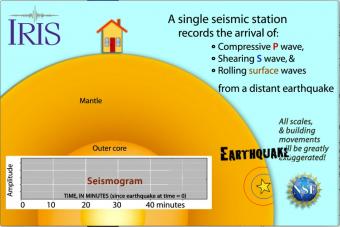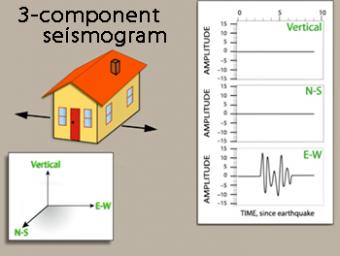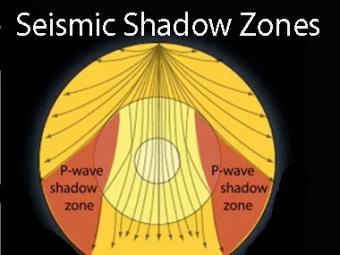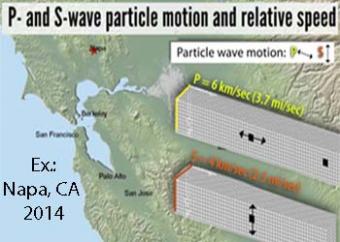An earthquake generates seismic waves that penetrate the Earth as body waves (P & S) or travel as surface waves (Love and Rayleigh). Each wave has a characteristic speed and style of motion. The animations below illustrate both the propogation of the wave as well as the motion of particles as the wave passes.
Wave propogation and particle motion for...

Seismic waves travel through the earth to a single seismic station. Scale and movement of the seismic station are greatly exaggerated to depict the relative motion recorded by the seismogram as P, S, and surface waves arrive.

We use exaggerated motion of a building (seismic station) to show how the ground moves during an earthquake, and why it is important to measure seismic waves using 3 components: vertical, N-S, and E-W. Before showing an actual distant earthquake, we break down the three axes of movement to clarify the 3 seismograms.

Seismic shadow zones have taught us much about the inside of the earth. This shows how P waves travel through solids and liquids, but S waves are stopped by the liquid outer core.

The P wave propagates at ~6 km/sec in rock with particle motions that are parallel to the direction of propagation. The S wave is slower at 4 km/sec and propagates with particle motions that are perpendicular to the direction of propagation.
We encourage the reuse and dissemination of the material on this site as long as attribution is retained. To this end the material on this site, unless otherwise noted, is offered under Creative Commons Attribution (CC BY 4.0) license